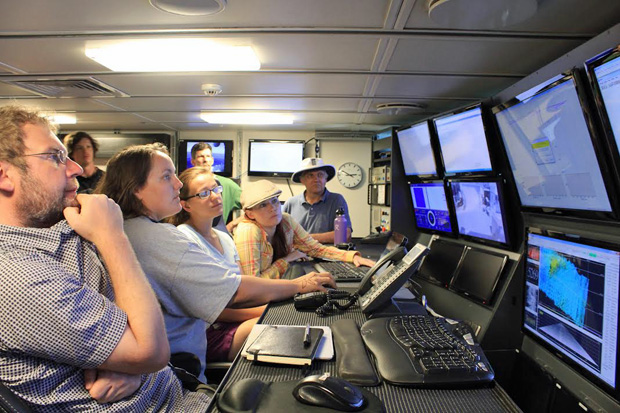UH researchers return with latest El Niño data from the central equatorial Pacific
 Science party in the R/V Falkor control room Image courtesy of Carlie Wiener, SOI.
Science party in the R/V Falkor control room Image courtesy of Carlie Wiener, SOI.The timing could not have been more perfect for this expedition. Kelvin Richards, professor of Oceanography and director of the International Pacific Research Center (IPRC), and his team took full advantage of the strong El Niño conditions during the three-week research cruise in the central equatorial Pacific completed yesterday. The expedition aboard Schmidt Ocean Institute’s research vessel (R/V) Falkor left Majuro, Marshall Islands in late July and completed an 11-day time-series at the equator, giving these researchers their first view of the water profile in this region.
The science team, led by Richards, has completed similar water profiling in the western equatorial Pacific region. However, this is Richards’ first time moving to the central Pacific.
Recent research suggests that small-scale turbulence in the ocean plays a critical—and to a certain extent overlooked—role in large ocean processes like El Niño. Accurately modeling how the ocean absorbs and moves heat, via turbulence, for example, is among the greatest challenges for climate change modeling and forecasting of El Niño Southern Oscillations (ENSOs). “We are seeing small vertical scale features in the shear present here and perhaps even stronger than in the west, giving an indication that these features are important in turbulent mixing,” Richards explains.
Read more about it in the UH System News, Nature, and the Honolulu Star-Advertiser (subscription required).



